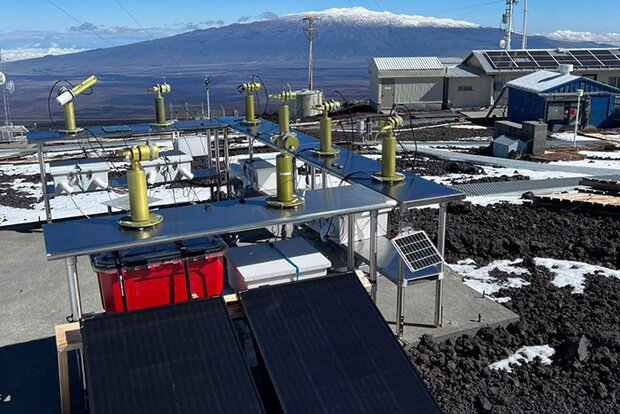One year after the eruption, Mauna Loa Observatory has resumed key science activities

With access to the Mauna Loa Atmospheric Baseline Observatory limited to weekly helicopter visits, NOAA staff have restored power with solar panels and battery backup systems. Credit: NOAA
The eruption of Mauna Loa volcano on Hawaii’s Big Island on Nov. 27, 2022 temporarily interrupted important scientific observations at the Global Monitoring Laboratory’s atmospheric baseline observatory located on its upper slope. Among them were long-running measurements of carbon dioxide (CO2) that provide a global benchmark for monitoring climate change.
After lava flows buried about a mile of the access road in deposits up to 30 feet deep and destroyed 60 power poles bringing electricity to the site, NOAA staff scrambled to stand up a temporary measurement site at a University of Hawai’i astronomical observatory located on nearby Mauna Kea to continue the critical CO2 monitoring and other atmospheric measurements taken at the observatory.
Over the past year, MLO staff visiting the site once a week via helicopter have restored limited power to four key observatory buildings by augmenting existing solar generation and adding battery systems. Approximately 33 percent of the atmospheric measurements on the mountain site have now been restored, including consistent measurements for all of the Global Monitoring Laboratory’s primary research groups: Greenhouse gases, Halocarbons and Trace gases, Ozone, Global radiation and Aerosols.